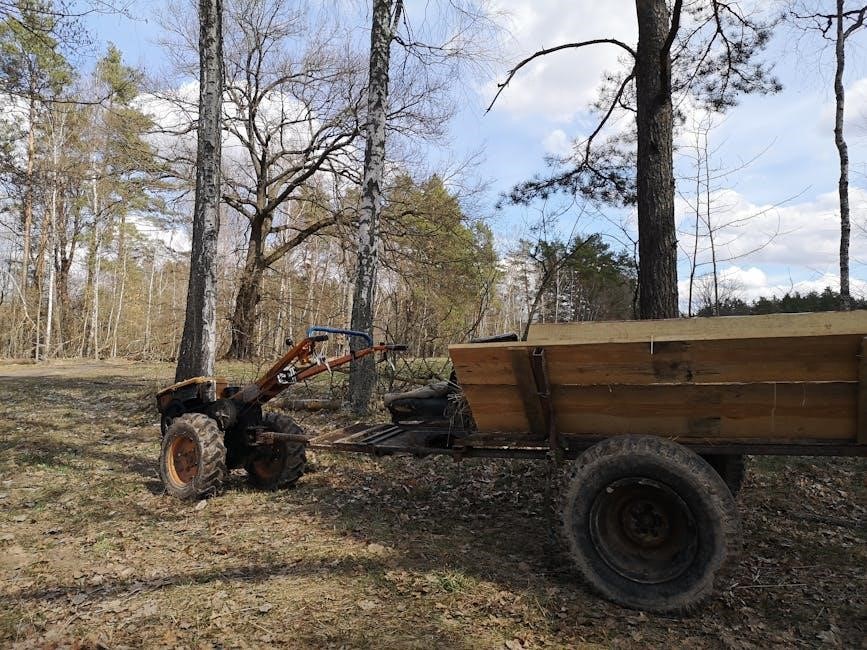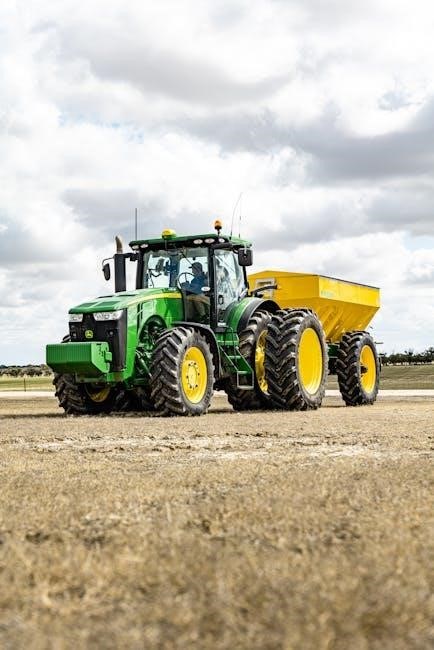Manual transmissions in tractor trailers require skill and precision to operate efficiently with
- multiple gears
and complex shifting techniques involved every day normally.
Overview of Manual Transmissions in Tractor Trailers
Manual transmissions in tractor trailers have been the standard for many years‚ with many trucks featuring up to 18 gears to shift through‚ making them complex to operate. The use of manual transmissions in tractor trailers requires a great deal of skill and practice to master‚ with drivers needing to be able to shift gears smoothly and efficiently in order to maintain control of the vehicle. In addition to the standard manual transmission‚ some tractor trailers also feature automated manual transmissions‚ which use a computer to automatically shift gears‚ but still require the driver to manually shift into gear. Overall‚ manual transmissions play a crucial role in the operation of tractor trailers‚ and are an essential part of the trucking industry‚ with many drivers preferring the control and flexibility they offer. They are used daily by many truckers.

Operation of Manual Transmissions
Manual transmissions operate by using a driver-controlled clutch and gearshift to change gears with multiple speed options available every time.
Shifting Techniques for 13 Speed Transmissions
Shifting techniques for 13 speed transmissions involve a combination of clutch control and gear selection to ensure smooth transitions between gears. The driver must use the clutch pedal to disconnect the engine from the transmission‚ and then use the gearshift to select the desired gear. This process requires a great deal of practice and coordination to master‚ as the driver must be able to feel when to shift gears and how much pressure to apply to the clutch pedal. With experience‚ drivers can develop the skills necessary to shift gears quickly and efficiently‚ allowing them to navigate a variety of driving conditions with ease. The key to successful shifting is to use a smooth and gradual motion when pressing the clutch pedal and shifting gears.
Maintenance and Troubleshooting
Regular maintenance is crucial for extending the life of manual transmissions with proper
- checks
and repairs daily normally.
Importance of Regular Maintenance for Manual Transmissions
Regular maintenance is essential for manual transmissions in tractor trailers‚ as it helps to prevent breakdowns and reduce repair costs. A well-maintained transmission can improve fuel efficiency‚ reduce wear and tear on other components‚ and enhance overall vehicle performance. Maintenance tasks such as checking fluid levels‚ inspecting for leaks‚ and replacing worn-out parts can help to identify potential issues before they become major problems. Additionally‚ regular maintenance can help to extend the life of the transmission‚ reducing the need for costly repairs or replacements. By prioritizing regular maintenance‚ truck drivers and fleet operators can help to ensure the reliability and efficiency of their vehicles‚ which is critical for meeting tight deadlines and delivering goods safely; Proper maintenance also involves following the manufacturer’s recommended schedule and guidelines for transmission maintenance.
Comparison with Automatic Transmissions
Manual transmissions are compared to automatics in terms of fuel efficiency and driver control always using specific
- criteria
to evaluate their performance normally.
Differences Between Automatic and Manual Transmissions for Semi Trucks
The main differences between automatic and manual transmissions for semi trucks lie in their operational characteristics and driver requirements‚ with manual transmissions offering more control over gear shifting and engine speed‚ while automatic transmissions provide ease of operation and reduced driver fatigue. The choice between the two types of transmissions depends on various factors‚ including driver preference‚ route conditions‚ and cargo type. Automatic transmissions are gaining popularity in the trucking industry due to their ease of use and reduced maintenance costs. However‚ manual transmissions still have their advantages‚ particularly in terms of fuel efficiency and engine performance. A thorough understanding of the differences between automatic and manual transmissions is essential for truck drivers to make informed decisions about their vehicle’s transmission type. This knowledge can help drivers optimize their vehicle’s performance and improve their overall driving experience.

Driver Preference and Control
Truck drivers prefer manual transmissions for control and personal satisfaction with driving experience.
Personal Preference for Manual Transmissions Among Truck Drivers
Truck drivers have varying preferences when it comes to manual transmissions‚ with some preferring the control and personal satisfaction that comes with driving a manual. Many drivers enjoy the sense of accomplishment and connection to the vehicle that manual transmissions provide. According to some drivers‚ manual transmissions allow for a more engaging and immersive driving experience. Additionally‚ manual transmissions can provide a sense of nostalgia and tradition‚ as they have been a part of the trucking industry for many years. Overall‚ the personal preference for manual transmissions among truck drivers is a complex issue that depends on individual experiences and values. Some drivers may prefer the ease and convenience of automatic transmissions‚ while others may enjoy the challenge and satisfaction of driving a manual. The preference for manual transmissions is often deeply personal and can vary greatly from driver to driver.

Training and Education
Tractor trailer manual transmission training involves classroom and hands-on instruction with experienced instructors normally.
Learning to Operate a Tractor Trailer with a Manual Transmission
Learning to operate a tractor trailer with a manual transmission requires a combination of classroom and hands-on instruction. Students typically begin by learning the basics of manual transmission operation‚ including how to properly use the clutch and shift gears. They then progress to practicing these skills in a controlled environment‚ such as a driving simulator or a closed course. As they become more comfortable with the basics‚ students move on to more advanced topics‚ such as shifting techniques and gear management. With patience and practice‚ students can master the skills needed to operate a tractor trailer with a manual transmission safely and efficiently‚ and go on to obtain their commercial driver’s license. This training is essential for those looking to become professional truck drivers. Manual transmission operation is a complex process.

Industry Trends and Evolution
Automated alternatives are rising in the trucking industry with new technologies emerging every day normally.
Rise of Automated Alternatives in the Trucking Industry
The trucking industry is experiencing a significant shift towards automated alternatives‚ with many manufacturers investing in the development of advanced transmission systems. This trend is driven by the need for improved efficiency‚ reduced driver fatigue‚ and enhanced safety features. Automated manual transmissions‚ for example‚ use computer-controlled systems to shift gears‚ eliminating the need for manual intervention. These systems are designed to optimize gear shifting‚ resulting in improved fuel economy and reduced wear on the vehicle; As technology continues to evolve‚ we can expect to see even more advanced automated alternatives emerge‚ potentially revolutionizing the way tractor trailers are operated. The rise of automated alternatives is likely to have a significant impact on the industry‚ and it will be interesting to see how manual transmissions adapt to these changes. New technologies are emerging every day.